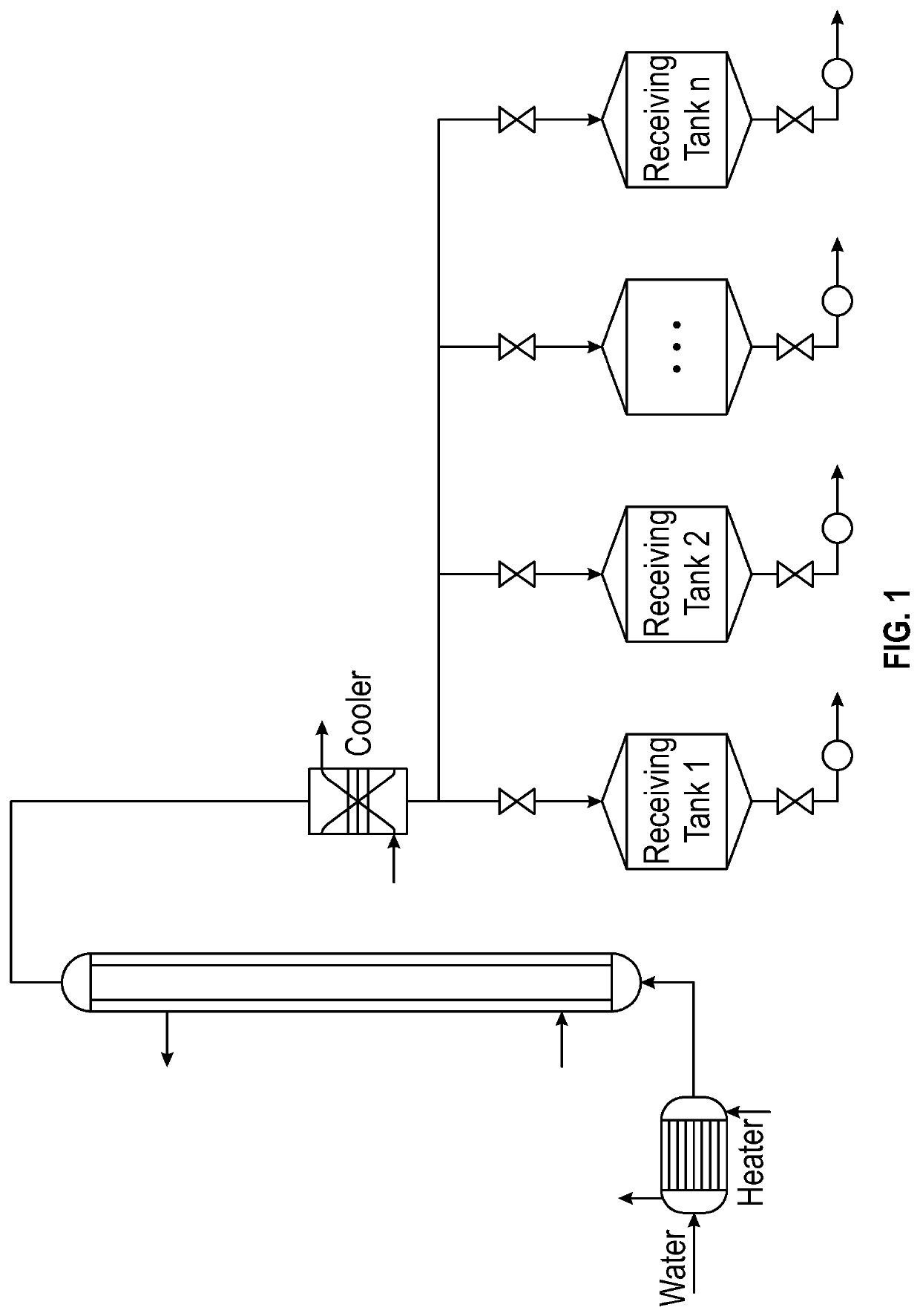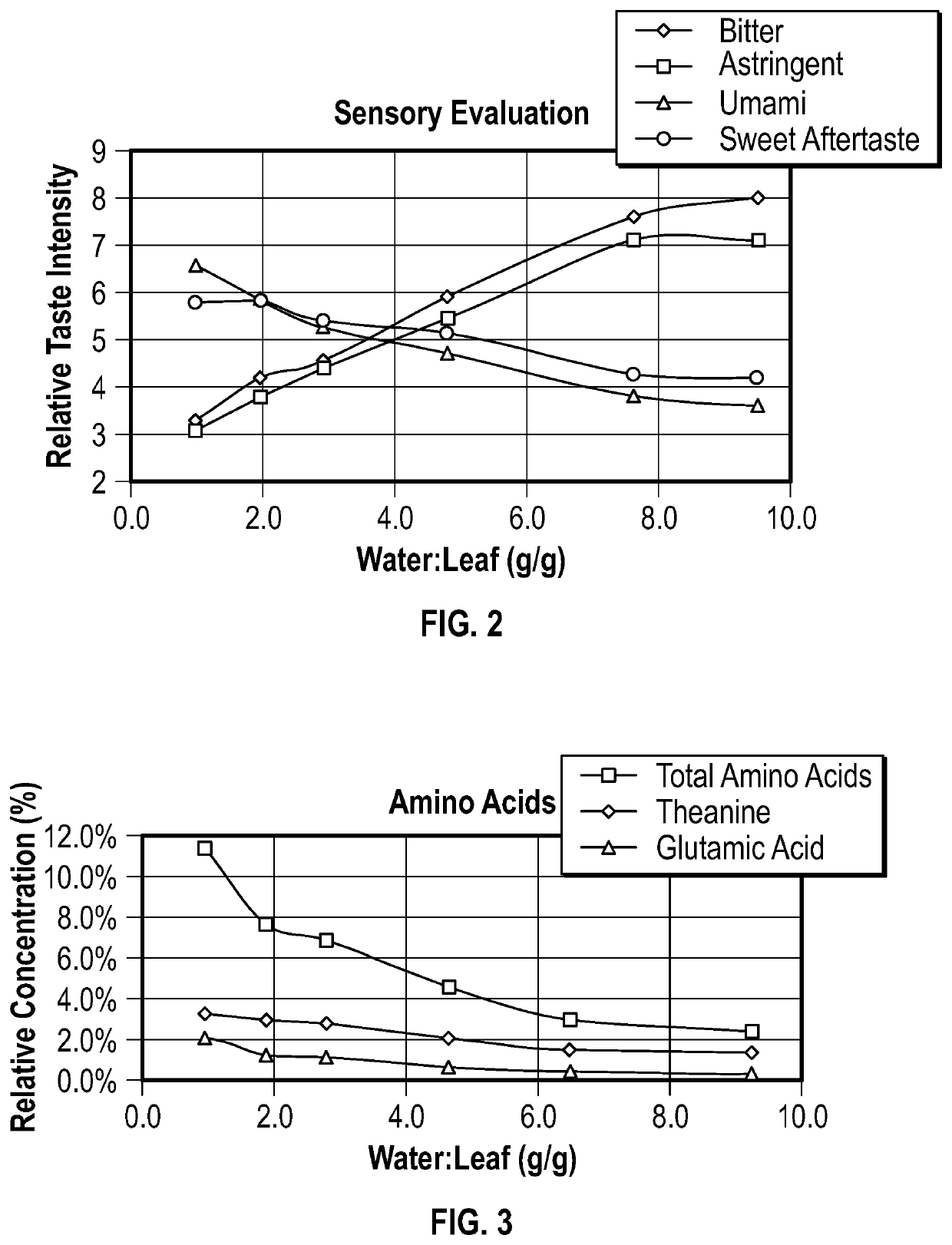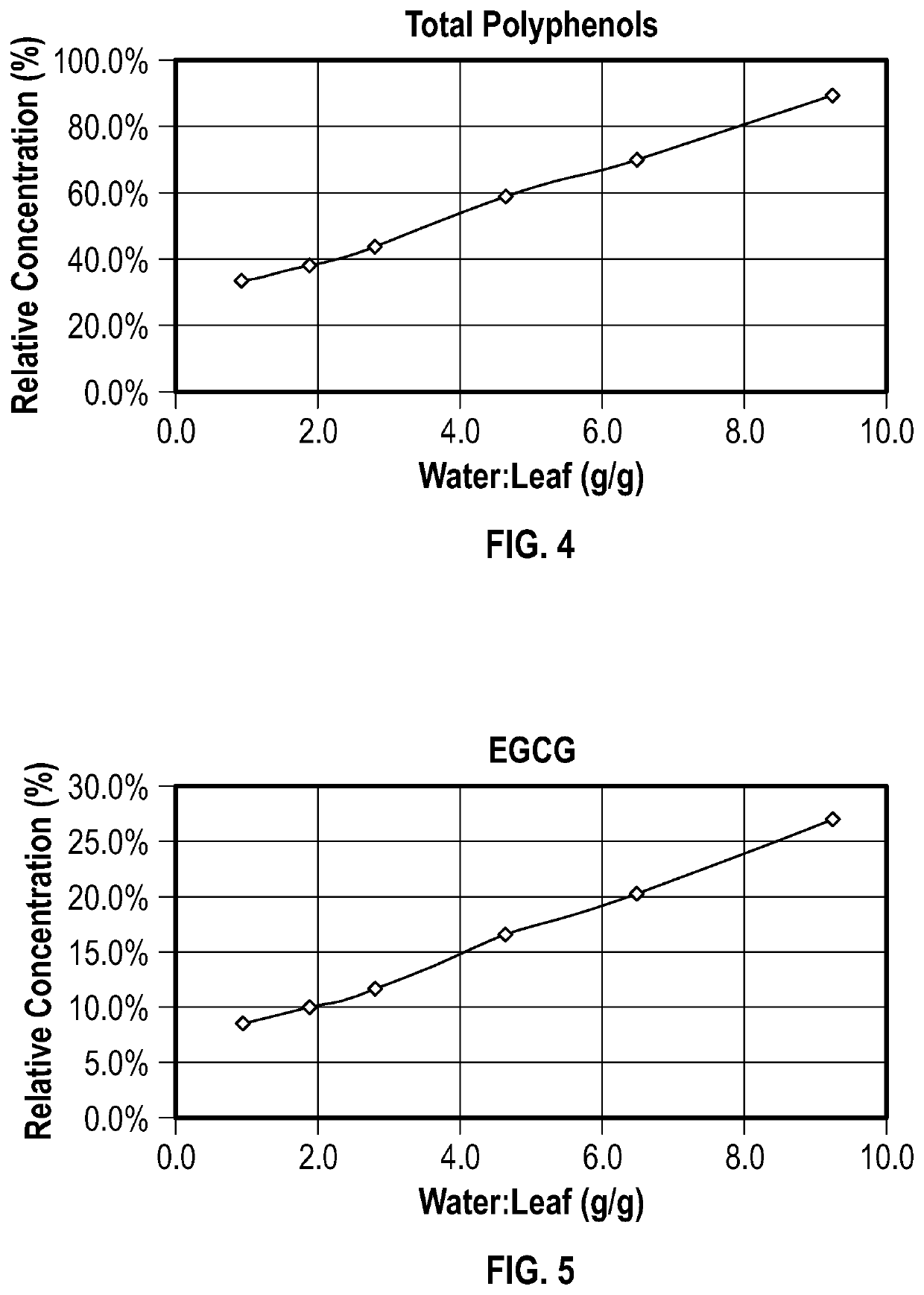Method for preparing tea leaf extracts having different tastes and beverages containing combinations of same
a tea leaf extract and tea leaf technology, applied in tea extraction, tea substitutes, tea, etc., can solve the problems of low concentration and extraction efficiency, low strength of aroma in tea leaf liquid prepared by the method, and the loss of tea leaf extracts
- Summary
- Abstract
- Description
- Claims
- Application Information
AI Technical Summary
Benefits of technology
Problems solved by technology
Method used
Image
Examples
example 1
Method for Preparing Green Tea Extracts Having Different Tastes
[0056]400 g of green tea tealeaves with a particle diameter of 16-32 mesh are packed into an extraction column, hot water at 60° C. is supplied continuously at a flow rate of 100 mL / min to perform extraction; once extraction begins, liquid extract is collected immediately until the volume ratio of water to tea is 1:1, to obtain a first-section liquid extract; second- to ninth-section liquid extracts are collected by the same principle according to the same volume ratio of water to tea.
[0057]The pressure during extraction is 0.1 Mpa-2 Mpa.
[0058]Relative taste curves for bitter taste, astringent taste, umami and sweet aftertaste are drawn:[0059]1) the 9 portions of liquid extract are used as samples;[0060]2) a green tea brew obtained by adding hot water at 70° C. at a mass ratio of tea to water of 1:50 and steeping for 10 minutes is used as a reference;[0061]3) the samples and the reference are formulated to be of a single...
example 2
Method for Preparing Black Tea Extracts Having Different Tastes
[0071]600 g of black broken tea (CTC black tea) is packed into an extraction column, hot water at 90° C. is supplied continuously at a flow rate which progressively decreases along a gradient from 200 mL / min to 20 mL / min to perform extraction; once extraction begins, liquid extract is collected immediately until the volume ratio of water to tea is 1:1, to obtain a first-section liquid extract; second- to seventh-section liquid extracts are collected by the same principle according to the same volume ratio of water to tea.
[0072]The pressure during extraction is 0.1 Mpa-2 Mpa.
[0073]Relative taste curves for bitter taste, astringent taste, umami and sweet aftertaste in the black tea extract are drawn:[0074]1) the 7 portions of liquid extract are used as samples;[0075]2) a black tea brew obtained by adding hot water at 80° C. at a mass ratio of tea to water of 1:50 and steeping for 10 minutes is used as a reference;[0076]3) ...
PUM
 Login to view more
Login to view more Abstract
Description
Claims
Application Information
 Login to view more
Login to view more - R&D Engineer
- R&D Manager
- IP Professional
- Industry Leading Data Capabilities
- Powerful AI technology
- Patent DNA Extraction
Browse by: Latest US Patents, China's latest patents, Technical Efficacy Thesaurus, Application Domain, Technology Topic.
© 2024 PatSnap. All rights reserved.Legal|Privacy policy|Modern Slavery Act Transparency Statement|Sitemap



